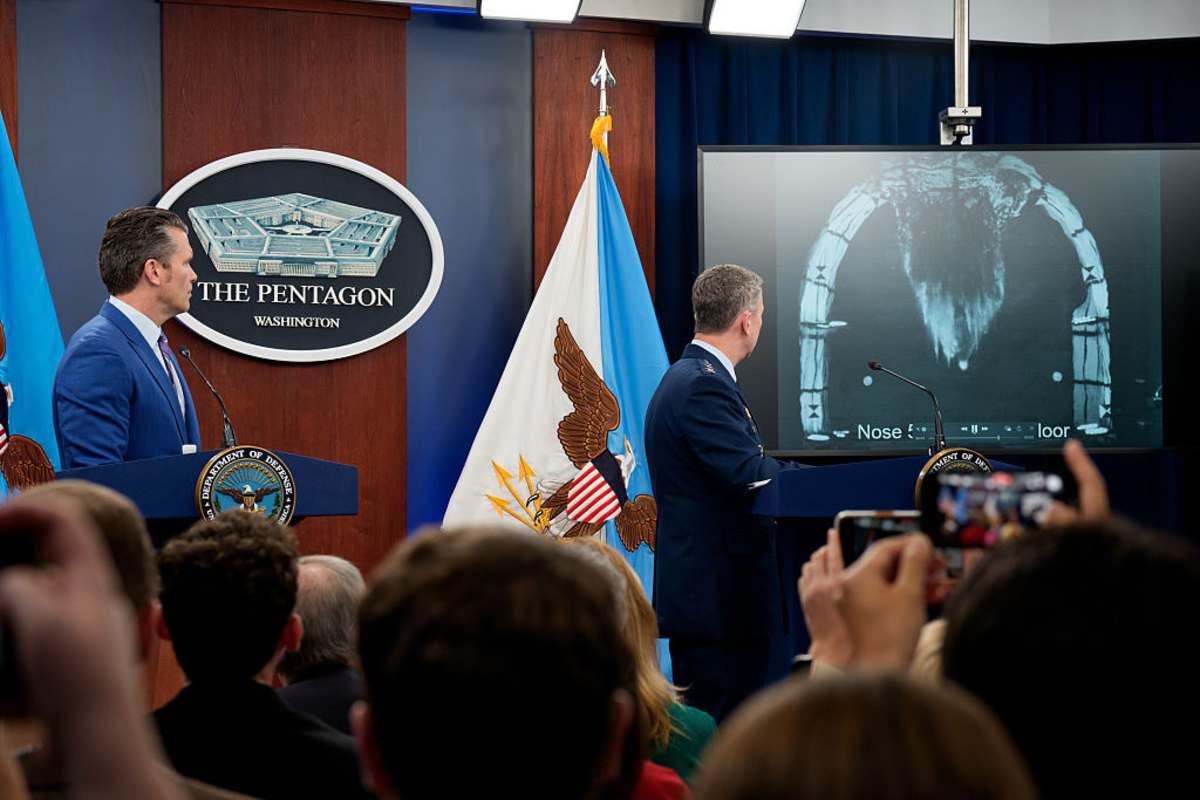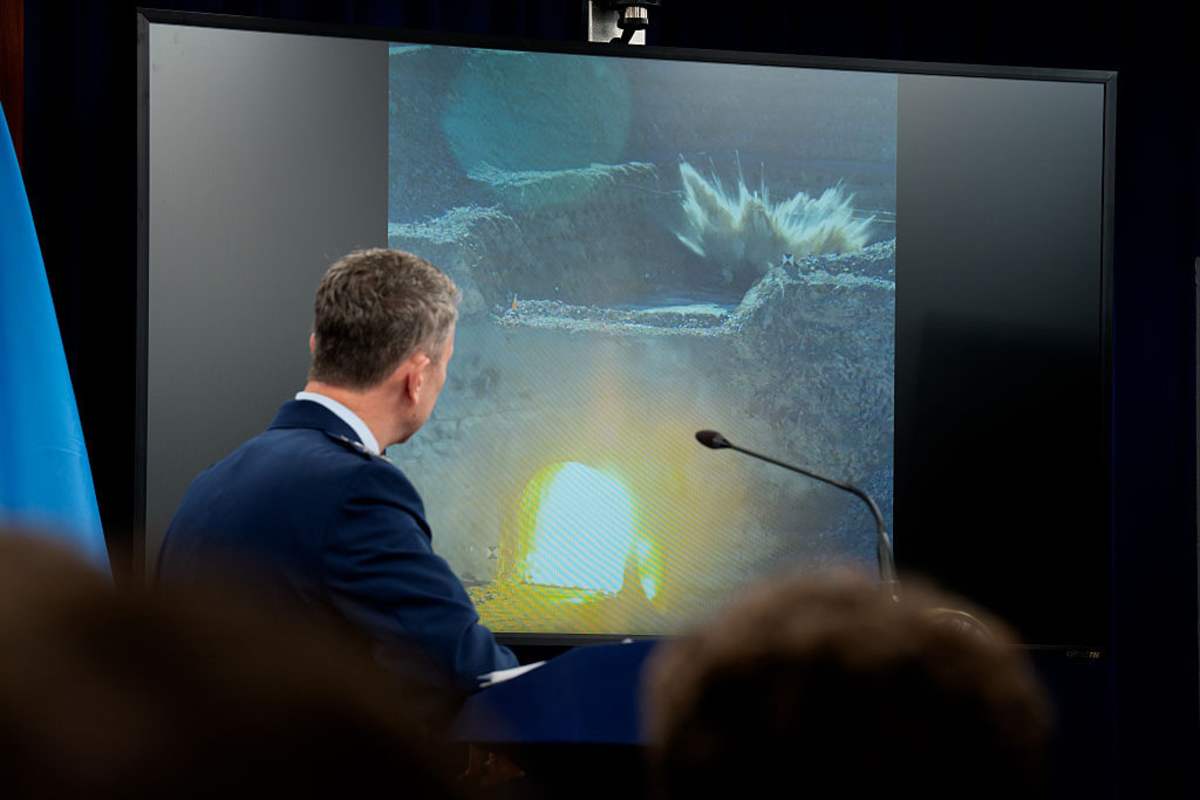White House uses bunker-buster bomb test videos to back Trump's claim of 'obliterating' Iran nuke sites

Pentagon releases test footage showing how bunker-busters work.@SecDef Hegseth: “Because of the hatred of this press... your people are trying to leak & spin that it wasn't successful. It's irresponsible.” Gen. “Razin” Caine, on the mission: “I have chills..talking about this.” pic.twitter.com/nS1q6ml7Ae
— The White House (@WhiteHouse) June 26, 2025
WASHINGTON, DC: In an effort to support President Donald Trump’s claims that US airstrikes “obliterated” Iran’s nuclear sites at Fordow, the White House released footage of bunker-buster bomb tests.
While American and Israeli officials hailed the mission as a major success, intelligence agencies and experts initially reported only “significant” damage, stopping short of confirming complete destruction.
The release of the test footage supposedly lends weight to Trump’s statements, showcasing the operation’s precision planning and reliance on advanced simulations.
Pete Hegseth and Dan Caine offer insight into planning and execution of US airstrikes on Iran
At a Pentagon press conference on Thursday, June 26, Defense Secretary Pete Hegseth and General Dan Caine, Chairman of the Joint Chiefs of Staff, provided a detailed account of the planning and execution behind the US airstrikes on Iran’s nuclear facilities.
NO OTHER COUNTRY IN THE WORLD HAS THE WEAPONRY OR THE CAPABILITIES THAT THE UNITED STATES HAS. pic.twitter.com/7lqcsUFe3a
— DOD Rapid Response (@DODResponse) June 26, 2025
General Caine shared test footage of the bunker-buster bombs used in the operation,12 of which were deployed.
The Pentagon also released footage demonstrating how these powerful bombs function. Unlike conventional weapons, bunker-busters are designed to penetrate deep underground before detonating, causing destruction below the surface that is not always visible above ground.

Both officials pushed back against a classified Defense Intelligence Agency (DIA) report suggesting the facilities were only damaged—not destroyed—and that Iran’s nuclear program had been set back by just a few months.
Hegseth dismissed the report as “low confidence” and noted that it contained “gaps in the information.” The accompanying videos illustrated how the bombers executed their attack, emphasizing the precision and depth-focused design of the bunker-buster weapons, according to NDTV.
Hegseth also criticized the media for downplaying the operation’s success, accusing journalists of prioritizing scandal over substance.
“Searching for scandals, you miss historic moments like recruiting at the Pentagon, historic levels in the Army, the Air Force, and the Navy,” he said.
While Hegseth went on the offensive against the press, General Caine avoided political commentary, focusing instead on the extensive technical and operational planning involved in the mission.
Dan Caine details the damage mechanisms used in the strikes
General Dan Caine provided a detailed breakdown of the mechanisms behind the damage inflicted during the strikes. “A bomb has three effects that cause damage: blast, fragmentation, and overpressure,” he explained. “In this case, the primary kill mechanisms in the mission space were a mix of overpressure and blast.”
Caine emphasized the sophistication of the operation: “The video I'm about to show you is the culmination of 15 years of testing and development, hundreds of test shots on various models.”
He highlighted the work of two officers at the Defense Threat Reduction Agency who had studied Iran’s underground Fordow facility for 15 years, the engineers who developed the 30,000-pound bunker-buster bombs, the B-2 crews who flew the 37-hour mission, and the troops who protected US bases from Iranian retaliation.
Caine explained that all six bombs aimed at Fordow hit their targets with precision. “Unlike a normal surface bomb, you won’t see an impact crater,” he noted. Instead, the bombs targeted ventilation shafts that Iran had tried to reinforce with concrete just days before the strike.
. @thejointstaff "Crews went to work on Friday; they kissed their loved ones goodbye, not knowing when or if they would be home.
— DOD Rapid Response (@DODResponse) June 26, 2025
Late on Saturday night, their families became aware of what was happening, and on Sunday, when those jets returned from Whiteman, their families were… pic.twitter.com/xcA79ecLFR
On each side of the facility, the first bomb breached the shaft, allowing four more to follow at speeds exceeding 1,000 feet per second. A sixth bomb served as a backup in case of malfunction but ultimately wasn’t needed.
Officials did not elaborate on the strikes against Natanz, which was hit with two bunker-busters, or Isfahan, where a single missile was launched from a US Navy submarine.
When asked about the fate of the 880 pounds of enriched uranium believed to be stored underground at Isfahan, Hegseth replied, “We’re looking at all aspects of intelligence and making sure we have a sense of what was where.”










